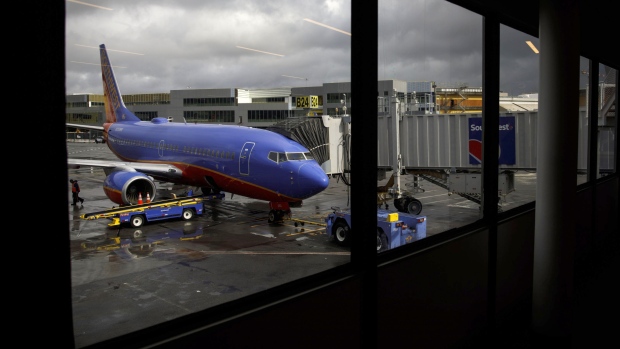Jul 23, 2020
American Air, Southwest rethink growth plans on demand stall
, Bloomberg News

American Airlines Group Inc. and Southwest Airlines Co. are joining rivals in pulling back on their plans to add flying capacity as the coronavirus pandemic worsens in the U.S.
Bookings have stalled in July with the rise of virus cases, Southwest said Thursday, vowing to adjust its flying “aggressively” to match volatile demand. American said seating will be down 60 per cent this quarter compared with a year ago -- only a modest improvement from its schedule in the depths of the crisis in the second quarter.
The plans underscore the long, choppy recovery ahead for U.S. airlines after a fledgling rebound in May and early June. Despite stepped-up efforts to tout enhanced cleaning procedures and require passengers to wear face masks, carriers from United Airlines Holdings Inc. to Southwest warn that the industry’s deep slump will continue as long as the pandemic is raging.
“We haven’t gone backwards, we have just lost our momentum is the issue,” Southwest Chief Executive Officer Gary Kelly said in an interview after the company reported earnings. “We didn’t schedule August and September for that. We scheduled as if we were going to continue our momentum. We’ve got too many flights in August and September, and we’re going to be working on that. We’ll be pulling the schedule back.”
American also has “modified our schedules accordingly” to match the plateau in demand growth, American CEO Doug Parker said on a conference call, without being more specific.
Cash Burn
Those schedule reductions, and the prospect that they could tighten supply and allow carriers to boost ticket prices, helped push up most airline shares Thursday, said George Ferguson, a Bloomberg Intelligence analyst. American climbed 3.6 per cent to US$11.77 at the close of trading in New York, United Airlines Holdings Inc. jumped 4.9 per cent to US$33.23 and Delta Air Lines Inc. rose 2 per cent to US$26.78. Southwest slid about 1.5 per cent to US$32.79.
In the current quarter, Southwest will burn about US$23 million in cash a day, roughly equal to the rate in the previous three-month period. Cash burn has become the most closely watched gauge for airlines as they struggle with the pandemic-induced collapse in demand that began in March.
In addition to the hurdle of stalled demand growth, carriers are slashing fares to entice consumers to board aircraft. Fare sales at Southwest since June have boosted demand, but not enough to fill planes more than 50 per cent full.
“It’s not like we’re able to fill up all the flights even with low fares,” Kelly said. “I don’t know how much lower they can go. They are really, really low.”
Layoff Plans
About 27 per cent of Southwest’s workers have agreed to leave or take extended time off, and the airline is now looking for more opportunities to cut costs. Because of the strong employee response, Dallas-based Southwest said it doesn’t plan to lay off workers or cut their pay through year-end.
That benign outlook contrasts with rivals that have warned that jobs could be at risk in October, once limits under federal aid packages expire. Southwest has received US$3.2 billion in U.S. assistance from the Cares Act.
American has notified 25,000 employees, or 29 per cent of its U.S. workforce, that they could lose their jobs later this year as the pandemic continues to damp demand. Another 3,000 people at two regional airlines owned by American also received notices of possible layoffs.
The Fort Worth, Texas-based airline has culled more than US$15 billion from its operating and capital budgets this year, helping pull its daily cash burn down to US$55 million in the second quarter -- lower than a previous forecast of US$70 million. American said it consumed about US$30 million a day in cash last month.
American swung to an adjusted loss of US$7.82 a share in the second quarter, compared with a US$7.95 average loss estimate from analysts surveyed by Bloomberg. Sales tumbled 86 per cent to US$1.62 billion, compared with the US$1.43 billion expected by Wall Street.
Temperature Screening
Southwest posted an adjusted second-quarter loss of US$2.67 a share, better than the US$2.77 average loss estimated by analysts surveyed by Bloomberg. Sales plunged 83 per cent to US$1.01 billion, higher than the US$904.2 million expected by Wall Street.
Southwest is beginning a test program at Dallas Love Field that will use thermal-screening cameras to check passengers’ temperatures, while Alaska Air Group Inc. is doing a temperature-screening pilot at Seattle-Tacoma International Airport.
The tests are designed to boost confidence in the safety of air travel, and to demonstrate to the Transportation Security Administration that such programs are useful. The nation’s largest airlines are pushing for the federal agency to be put in charge of such screenings at airports.






